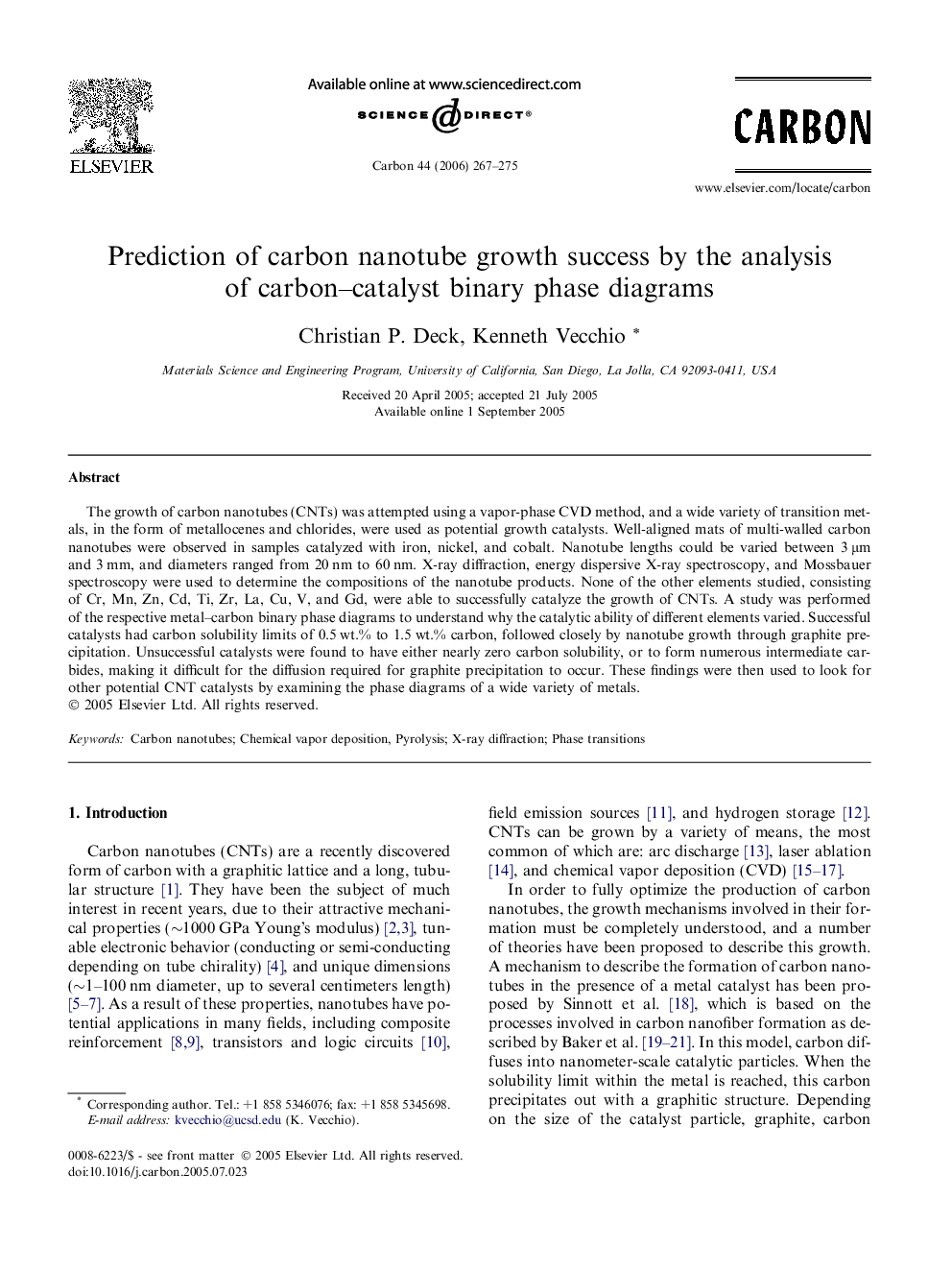| Article ID | Journal | Published Year | Pages | File Type |
|---|---|---|---|---|
| 1420025 | Carbon | 2006 | 9 Pages |
The growth of carbon nanotubes (CNTs) was attempted using a vapor-phase CVD method, and a wide variety of transition metals, in the form of metallocenes and chlorides, were used as potential growth catalysts. Well-aligned mats of multi-walled carbon nanotubes were observed in samples catalyzed with iron, nickel, and cobalt. Nanotube lengths could be varied between 3 μm and 3 mm, and diameters ranged from 20 nm to 60 nm. X-ray diffraction, energy dispersive X-ray spectroscopy, and Mossbauer spectroscopy were used to determine the compositions of the nanotube products. None of the other elements studied, consisting of Cr, Mn, Zn, Cd, Ti, Zr, La, Cu, V, and Gd, were able to successfully catalyze the growth of CNTs. A study was performed of the respective metal–carbon binary phase diagrams to understand why the catalytic ability of different elements varied. Successful catalysts had carbon solubility limits of 0.5 wt.% to 1.5 wt.% carbon, followed closely by nanotube growth through graphite precipitation. Unsuccessful catalysts were found to have either nearly zero carbon solubility, or to form numerous intermediate carbides, making it difficult for the diffusion required for graphite precipitation to occur. These findings were then used to look for other potential CNT catalysts by examining the phase diagrams of a wide variety of metals.
